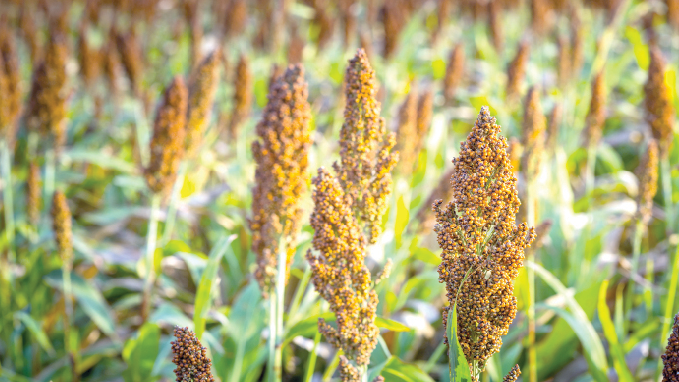Adopt gene-editing to boost crop yields, Africa advised

African countries have been called upon to adopt gene editing (GE) of crops in the wake of climate change, biodiversity loss, and rising food production costs.
“We have come out of the chemistry era and we are now in the biology era which is giving solutions and not protection,” said Margaret Karembu, Director of International Service for the Acquisition of Agri-biotech Applications (ISAAA)-AfriCenter recently during the Africa Biennial Biosciences Communication (ABBC 2023) symposium.
According to ISAAA, gene editing also known as genome editing is one of the new breeding techniques that allow scientists to improve the characteristics of living organisms, including plants, animals, and bacteria.
The technologies used for gene editing work like scissors, cutting the DNA in a specific location, then remove, add, or replace known DNA sequences where the cut was made.
New varieties
The most used technologies in gene editing are clustered regularly interspaced short palindromic repeats (CRISPR)-CRISPR-associated protein 9 (Cas9), transcription activator-like effector nucleases (TALENs), zinc-finger nucleases (ZFNs), and homing endonucleases or meganucleases.
One of the most significant advantages of gene editing is that the technique can facilitate the production of new varieties more quickly and efficiently, allowing the continent to respond more rapidly to food insecurity challenges.
Paul Chege, a programme associate at ISAAA AfriCenter and acting coordinator of Programme for Biosafety System (PBS) Kenya, says it’s important to differentiate GE from genetically-modified organisms (GMOs). While GMOs involve introducing DNA from other species, GE does not. It is more akin to an accelerated version of the breeding techniques farmers have been using for millennia.
GE allows scientists to precisely target specific sections of a plant’s DNA, and alter traits, such as disease resistance without affecting other parts of the DNA. Unlike traditional plant breeding, which involves crossing parent plants and screening thousands of seedlings for changes in genetics, GE offers a fast-track approach to developing new crop varieties
“Gene editing is a solution that is set to be a game changer in the agricultural sector. And it will play a critical role in building sustainable agriculture systems that can contribute to food security,” said Chege.
Prof Steven Runo of Kenyatta University says Kenyan researchers have already started to use this technology to come up with striga smart sorghum. Striga is a parasitic weed that adversely affects food and nutritional security for over 300 million people in Sub-Saharan Africa.
The weed is hard to manage because of its well-adopted parasitic lifestyle. Current control measures are either ineffective or too expensive for smallholder farmers in Africa. This is why a project known as Feed the Future Striga Smart Sorghum for Africa (SSSfA) was launched in Kenya in 2022.
Striga resistant sorghum
“SSSfA project aims to come up with striga-resistant sorghum by using genome editing. This variety will improve sorghum harvests and contribute to increased food and nutritional security while empowering African smallholder farmers many of whom are women and improve their livelihoods,” said Runo.
He says the project also endeavours to develop a sustainable model for developing home-grown genome-edited striga-resistant sorghum. This involves integrating capacity development to ensure routine gene editing in self-sustaining plant biotechnology laboratories dubbed Africa Biosciences Hubs in Kenya and Ethiopia.
These hubs will support future gene-edited innovations and bio-entrepreneurship and demonstrate local capacity to commercialise agri-biotech products.
“Research on sorghum has proven that we can obtain striga-resistant sorghum that avoids using synthetic chemicals and can also grow well in warmer environments. The precision and efficacy of this technique has been demonstrated through extensive research, and plants that have been edited in a particular trait by gene editing often cannot be distinguished from those containing the same trait bred conventionally,” says Runo.
He says since this product is still in the lab once approved, it will adhere to all regulatory requirements before it is released to farmers in Kenya and Ethiopia.
Different regulations
Dr Roy Mugira, the Chief Executive Officer of the National Biosafety Authority (NBA) says that with the approval of the genome editing guidelines, not all crops derived through gene editing will be subjected to the same regulations as GMOs in Kenya. The Guidelines provide clarity on which products should regulated under the Biosafety Act, 2009, and what would be regulated as conventional varieties under the Act that governs other relevant regulatory authorities.
So far, SSFA project has made an application to the National Biosafety Authority for the determination of regulation. Ethiopia has also developed genome editing guidelines that have gone through a stakeholder review process and are awaiting approval by the Environmental Protection Authority (EPA). “The National Biosafety Authority was established to regulate genetically modified organisms. But when genome editing became possible, we stepped in forward quickly to develop guidelines that will determine which genome-edited products would be regulated through the biosafety act as a GMO, because the genome editing proceeds in three different pathways,” says Mugira.
One of the pathways has no element of GMO in it, and, therefore, that would ordinarily be a non-GMO and cannot be regulated under the Biosecurity Act. The other pathway is where within the earliest stages of the product development there is GMO application of gene modification technology, but the end product again is not GMO. The last pathway is where right from the beginning to the end the product and the process end up with a GMO, and, therefore, that one becomes a subject of regulation by NBA regulatory framework within the biosafety Act.












